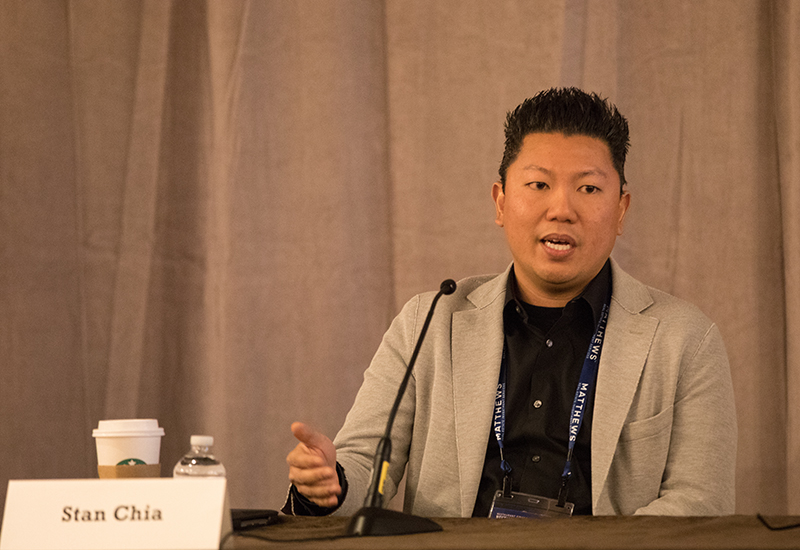By Laura Michaels
Grubhub processes 305,000 delivery orders per day, and COO Stan Chia says that number is only going to increase as consumers and restaurants alike adjust to the new normal that revolves around convenience.
The COO of Grubhub, which provides third-party delivery services in more than 800 cities, was joined by Matt Tucker, COO of online ordering and delivery platform Olo, and Mike Church, managing director at Deloitte Consulting, for a discussion at the Restaurant Finance & Development Conference in Las Vegas November 13-15 about using delivery to drive revenue and demand.
Tucker, whose Olo service focuses on multi-unit restaurants, didn’t sugarcoat it: “Delivery is very hard and it’s very tough to make money. There’s no silver bullet in delivery by any stretch of the imagination.” Restaurant operators have to think about logistics and the best way to integrate delivery into their overall operations, he stresses, including everything from whether there’s accessible parking for drivers to how the kitchen processes each order.
“You can’t just spread a little layer of delivery love on top of your brand—it’s not that simple,” says Tucker.
Point-of-sale integration is huge, agrees Chia, as is the consumer-facing technology, something Grubhub treats as paramount to success both for the delivery service and the restaurant.
“The actual management of the guest experience through the life cycle of that delivery order is huge,” says Chia. “How Grubhub tackles that is to try to own a lot of that customer experience piece,” including taking ownership of the process if something goes wrong that’s “very clearly not the restaurant’s fault.”
Church, who focuses on Deloitte’s digital and restaurant practice, says success with third-party delivery depends a lot on how restaurant brands can differentiate themselves in the space. It’s all about “empower me,” says Church. “The consumer is expecting tools and ways to get real-time delivery times, menu customization,” and the third-party services and restaurants that respond to those desires are going to win.
“Incremental sales” are the buzzwords that get restaurant operators’ ears to perk up, and Chia says that’s a key focus for Grubhub in demonstrating its value to restaurants.
“We want to make sure the volume we send them isn’t cannibalistic, that it’s truly incremental,” says Chia, adding several reports, including research from investment bank Cowen shows delivery sales are 80 percent incremental. “We feel very good about that.”
But looking beyond the sales aspect is equally important, puts in Church, who encourages restaurant owners to view these channels as an opportunity to partner with the delivery service and “learn along the way,” picking up information on customers and using insights from ordering data to target marking efforts or adjust brand positioning. It can even be as simple as talking to a service such as Grubhub about the type of food and drink images that most appeal to consumers on the ordering platform.
“There’s real tactical ways to bring this to life for guests and in a real and profitable way,” says Church.
On the topic of profits, Tucker says operators need to understand they can’t necessarily apply delivery in the same manner to every daypart and should consider, for example, varying the price charged during more popular times. Operators, he continues, “need to understand that the guest is willing to pay for that convenience” and restaurants should charge as such.
On-demand and off-premise dining isn’t going away and is only going to expand, the panelists agree, and those on both sides of the equation have to work together to ultimately make this new reality beneficial to their business.


